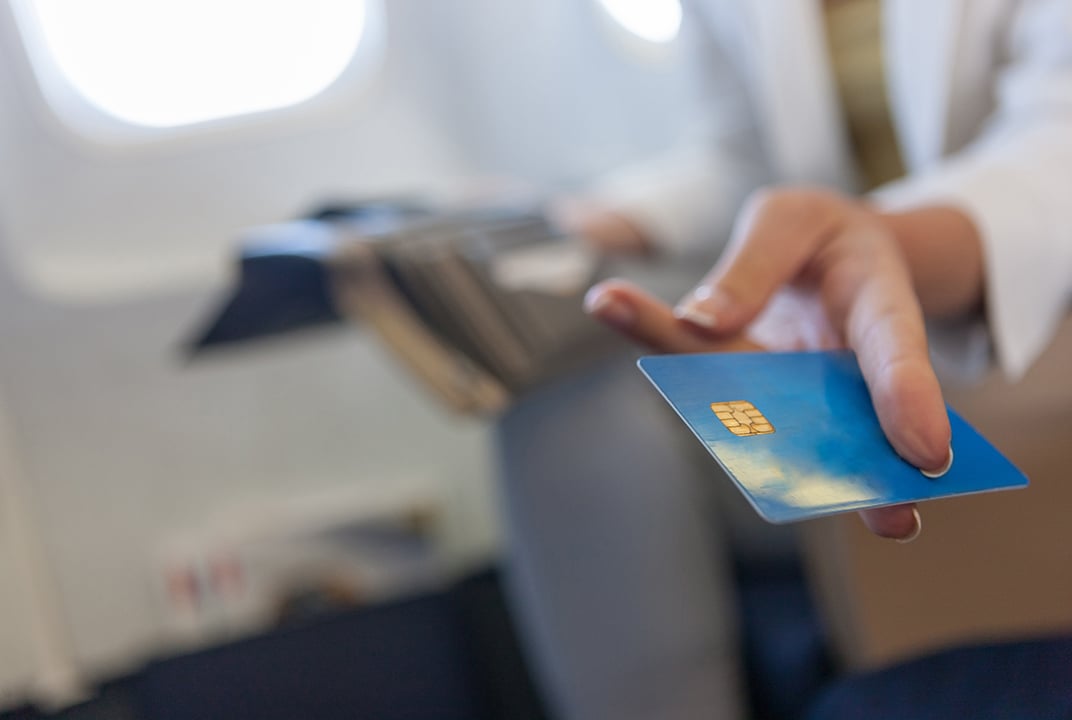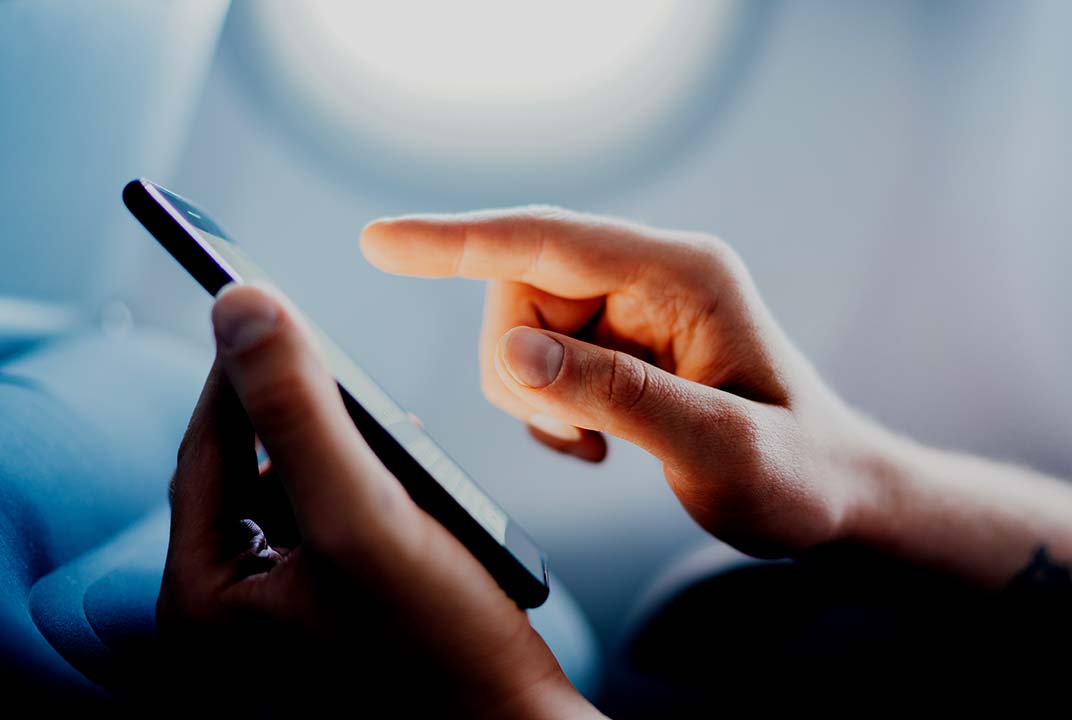Insight | Connecting the captive market
Connecting the captive market
Connectivity upgrades ancillary revenues as airlines get inventive with a range of new passenger offerings
Increased connectivity is transforming the aviation industry. Commercially speaking, this means increased revenue opportunities for airlines. Wi-Fi, revitalised e-commerce, entertainment streaming, advertising and sponsorship are just a few of the ways in which airlines are looking at increasing revenue per passenger.
Sir Tim Clark, president of Emirates, the world’s fourth-largest airline, was unequivocal when he told a conference in September 2016 that Emirates was determined to improve its ancillary offering. “We simply have to increase our ancillary revenue streams,” he said. It’s widely understood that profitability per seat on some airlines’ routes may be as low as a few dollars and, as pricing continues to be squeezed, the importance of additional revenue streams has never been more crucial.
IdeaWorksCompany, a leading consultant in airline ancillary revenues, and technology platform CarTrawler, recently estimated airline ancillary revenue to be worth $67.4bn (at the end of 2016). This is an almost 200% increase from the 2010 figure of $22.6bn – a result of more passengers per year plus more paid ‘a la carte’ options – such as seat assignment and checked baggage – being available to them. Indeed, passengers have become used to paying for extras, helping to pave the way for new revenue models, such as those based around connectivity.
So what are the commercial opportunities for airlines? How are different airlines tailoring their approach to these revenue streams? What trends are destined to soar and which are likely to remain grounded?
"We simply have to increase our ancillary revenue streams"
Wi-Fi
More than any other amenity, airline passengers have long demanded the opportunity to stay connected in the sky. Already firmly established in North America, this year will see a significant step change in Wi-Fi access for European and Asia-Pacific flyers. However, how airlines provide this access varies greatly.
Tiered costs
Lufthansa is rolling out its short and medium haul FlyNet Wi-Fi service in 2017. A simple service (FlyNet Message) that allows you to email, iMessage and use WhatsApp will cost €3. FlyNet Surf will allow passengers to surf the web for €7. Its premium service, FlyNet Stream costs €12 and will enable passengers to stream. American Airlines, Aer Lingus and Delta offer similar tiered access costs.
Bringing connectivity onboard could mean breaking the walled-garden of the airline retail portal and opening the passengers to the wider internet and sellers like Amazon. However many carriers offer sponsorships and affiliate deals to earn from the passengers they deliver to sellers. The airline’s internet service carries technology that identifies the source of the traffic to the partner sites.
Advertiser sponsored
This passes the costs on to advertisers. Last year, American airline JetBlue struck a deal with Amazon to conduct a trial allowing passengers with an Amazon Prime membership to access the operator’s Wi-Fi service and stream video entertainment. Travellers without a membership could sign up for a free 30-day Amazon Prime trial.
Airmiles/Loyalty
United Airlines allows passengers on some flights to trade in flyer miles for internet access. Finnair provide free Wi-Fi to its premium passengers on its A350 flights. The customer loyalty that this creates can have significant commercial benefits.
Free
As it stands, eight carriers offer free access. Europe’s third largest low-cost airline, Norwegian, offers free Wi-Fi on most of its European flights. America’s JetBlue recently became the first airline to offer free Wi-Fi on all its aircraft for all flights. Restrictions are abundant though. Emirates offers free access for the first 10MB of data usage for example.
"On an airplane, you have a captive market, and with sophisticated technology, you can sell to passengers in very personal ways"
Retail opportunities
How can the seat that a passenger occupies become a more powerful point of sale? Industry insiders have described the inflight retail market as the ‘small channel with a big opportunity’. As traditional inflight purchases wane – Delta stopped inflight tax-free sales in 2014 – analysts are looking towards a more comprehensive ‘department store online’ approach. For example, this could see airlines offering online inflight ‘concession stores’ to brands and retailers, with the airline taking a percentage of sales made during the journey.
Self-service shopping rather than waiting for the tax free trolley increases onboard sales by three to five times. And ordering items online to be delivered conveniently to a home address – rather than the passenger picking them up at the end of the flight – will see ancillary revenue rise.
Real time card authorisation on connected flights has opened up a world of opportunities with higher cost purchases and identification possible. Onward travel, car hire and hotel rooms can now be offered as a seamless service.
In 2016, Ryanair launched Ryanair Rooms offering its passengers a choice of accommodation. This complements its existing car hire service. Its chief marketing officer Kenny Jacobs talks confidently about becoming the Amazon of air travel.
Many of these opportunities to increase passenger spend are data driven. Growing amounts of sophisticated data can facilitate a far more rounded ‘personalised’ offer for passengers. As the New York Times stated: “On an airplane, you have a captive market, and with sophisticated technology, you can sell to passengers in very personal ways.” An elite-status passenger, for example, might be sold hotel reservation packages commensurate with their demographic, while a destination specific approach could see all passengers using IFC on a particular flight being shown purchase options – for example sports and concert tickets – for the city they’re flying to.
One of the keys to selling more is the delivery of relevant notifications to the passenger mobiles via airline’s own apps. With reliable on-board connectivity, these service and offer messages can be presented throughout the entire passenger journey and be personalised via the data on customers.
Inflight entertainment
Qantas plans to launch a service that will allow its customers to access subscription services Netflix, Spotify and Australian TV app Foxtel for free. It’s a model that many airlines are also exploring for popular events, such as live sport. The days of missing the big game because they’re in the air could soon be a thing of the past for passengers prepared to pay for the privilege. Similarly, IFE could be introduced to short-haul flights, without the need for the installation of expensive seat-back screens. As more and more customers bring their own devices on board, IFE could be streamed to them at an additional cost.
Advertising
Airline passengers are the ideal captive audience. And with the wealth of data that airlines can capture, inflight ads can be personalised like never before. Advertisers want to build connections with consumers and this gives airlines the opportunity to sell highly targeted advertising space or earn from affiliate programs because of their access to an audience for whom they hold a great deal of background information.
"We want to use that data to enhance their individual experiences"
So said Lufthansa CEO Carsten Spohr, recently. In this way, offering personalised retail opportunities or a Netflix-style bespoke entertainment offering, driven by IFC, will help increase both spend and customer loyalty.
New technology, new revenue models
There is clearly no one-size-fits-all approach that will translate into increased ancillary revenue. Each operator will recognise what works for their brand and act accordingly. But one thing is transparent – wider and deeper connectivity is fuelling these potential revenue streams. Passengers expect to stay connected in the air as they do on the ground. Get the Wi-Fi access model correct and improved profitability, brand standout and loyalty should follow.


